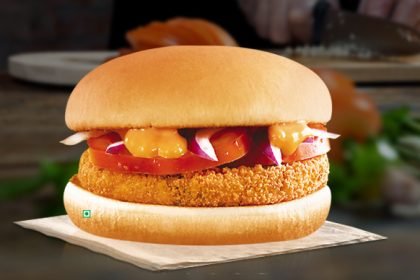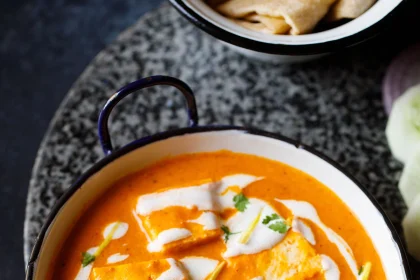This legendary hamburger is a construct of simple ingredients, but until now no one has succeeded in creating a perfect clone recipe—most likely because they miss the subtleties that make this 70-year-old recipe so great.
If there is such a thing as hamburger perfection, In-N-Out Burger has achieved it.
The 330-unit West Coast family-owned chain learned a long time ago that if it ain’t broke, don’t be fixing. This means the menu today looks nearly the same as it did at the first In-N-Out Burger in Baldwin Park, California over 70 years ago. With the exception of the not-so-secret “secret” menu, there are very few decisions to make from the limited choices of a hamburger, cheeseburger, Double-Double, fries, and drinks. It’s this simplicity that pins In-N-Out Burger to the top of every “Best Hamburger” list—a testament to doing just a few things and doing them really well.
The first choice on the menu is the chain’s signature, the trademarked Double-Double which comes with two beef patties and two slices of cheese, and a whole onion slice stacked between them.
There are lots of secrets to share with you regarding the construction of this amazing burger: the crispiness of the buns, the size of the relish, the best beef to use, and how to make a burger “smile”—details that, on their own, seem trivial. But put all of these tricks together in one burger, and you’ll be surprised by how much the little things matter.
Yes, the little things.
Like relish.
Which is a perfect place to start our hacking…
The majority of clone concoctions for the In-N-Out spread that I’ve seen call for sweet pickle relish, and you should steer clear of those recipes. Hacky hackers assume that all pickle relish in burger sauces is sweet pickle relish, but that is not the case.
After running the spread through a fine-mesh strainer and tasting the leftover green solids, it was clear that the relish was not sweet at all, but sour and tart. It wasn’t hard to conclude that the spread at In-N-Out is made with dill pickle relish, and that is why traditional sliced dill pickles are absent from the burgers on the menu board. That would be dill pickle overkill.
Also, the size of the pieces of chopped dill pickle in the relish is very small. Much smaller than the pickle chunks in the bottled relish you buy at the store.
That means you must finely mince the relish out of the jar, before adding it to the spread, to get the same ratio of sourness in each bite as the original burger.
And while you’re in a mincing mode, mince up that onion super fine as well.
Once you’ve minced the relish and onion, combine them with the other ingredients for the spread: mayonnaise, ketchup, mustard, vinegar, paprika, and salt.
Stir this up in a small bowl, then give it some alone time.
Just as the quality of chocolate and vanilla determines the quality of your chocolate chip cookies, the ground beef you use in your hamburgers matters a lot. The beef patty is the star of every hamburger, and it can make or break a good recipe. In this case, it’s a double bill, so ground beef is an especially important component.
One big reason In-N-Out’s beef tastes so good is its high-fat content. It’s higher than the 20% fat most commonly found in pre-ground chuck from your local butcher.
Ideally, you want beef that is 25% to 30% fat, and that means you’ll need to grind your own (or have a butcher do it). If you have a Kitchen-Aid stand mixer, all you’ll need is an attachment, and it’s well worth having. It’s nice to be in charge of what goes into your ground meats.
It will be hard to tell what the fat percentage of your home-ground beef is, however, but if it looks like the photo above, it should be just right. If you start with a well-marbled chuck roast, there’s a good chance your freshly ground beef will be in the recommended fat ratio ballpark.
If you don’t have a meat grinder and are not planning to get one just because you found a cool hamburger hack on the internet, then get pre-ground chuck with an 80/20 meat-to-fat ratio.
In-N-Out uses fresh, never frozen, beef patties. Judging by the final cooked weight of the patties, the beef portions start at around 2 ounces.
To get the perfect final cooked size of In-N-Out’s patties you must start with circles that are 4 inches across.
Press the ground beef onto wax paper, then place another piece of wax paper on top until you are ready to cook ’em.
When you bite into a fresh hamburger from In-N-Out, you will experience what I call “The Crunch.” It comes from very well-done toasted bun faces that are practically cracker-crisp by the time they get pulled off the grill.
“The Crunch” is not a sensation that you will get from other chains where the hamburgers are wrapped tightly and stacked under a heat lamp. The trapped moisture in those burgers quickly steams away any pleasant crispiness from the bun. To prevent that, an In-N-Out burger is never fully enclosed in its wrapper.
“The Crunch” is easy to replicate by placing the faces of ungreased buns down onto a preheated pan over medium/low to medium heat. Check the buns periodically to see how they’re doing. You want them to be at least as dark as the photo above, and a little darker is even better.
Achieving “The Crunch” will take longer than the 4 minutes it takes to cook the burgers, so start with the buns a few minutes before cooking your beef patties.
And use the freshest, highest quality buns you can find.
Preheat another pan over medium/low to medium heat. Since every stove heats differently it’s difficult to specify exactly where your knob should be set for this step. You’ll have to figure that out for yourself after inspecting the first cooked patty.
If the beef has a nice dark brown crust on it when flipped after cooking for exactly 2 minutes, then your temperature is just right. Keep it there. If not, then adjust accordingly so that your patties are perfectly browned after 2 minutes.
Also, In-N-Out burgers are quite salty. Add a generous shaking of salt and just a pinch of coarse black pepper to both sides of each patty as they cook.
I’m stoked to have discovered this particular insider secret because it cleared up a misconception I’ve had about these burgers for over 25 years.
At first glance of promotional photographs of the Double-Double, it’s easy to assume that there are 2 slices of American cheese on top of each beef patty since the front-facing edge of the cheese is double-thick. That’s why I incorrectly called for 4 slices of cheese in my original hack of this recipe for my first book, Top Secret Recipes. That always felt wrong—4 slices are excessive and it’s not called a Double-Quadruple—but the visual of the folded cheese threw me and I made the wrong call.
This confusion was recently cleared up when I discovered that the chain teaches its workers to “make the burgers smile” by folding the cheese over itself a little bit at the front. Approximately one-quarter of the cheese is folded and then placed, folded-side-down, onto the beef patty. But rather than placing the cheese in the middle of the patty, it’s positioned so that the edge of the burger patty is exposed, making it “smile.” It’s like how you show your teeth when you smile, but in this case, the beef is the teeth.
When fully assembled this exposed edge of the beef patty makes the finished burger look more appealing, and the first few bites are extra cheesy.
When you add the folded cheese slices to your patties once you flip them (add salt and pepper first), be sure to leave about 1/2 inch of the patty uncovered.
And for God’s sake, don’t use the individually wrapped cheese food slices, like Kraft Singles. That is not real cheese and it will ruin your otherwise perfect burger.
Get real American cheese and erase Kraft Singles from your shopping list forever.
Once you place the cheese add a slice of onion on top of one patty and a well-toasted bun on top of the other.
While these patties cook for 2 minutes, you’ll need to build the bottom of your masterpiece.
It goes like this…
Spread about 1 1/2 tablespoons of spread on the crispy bottom bun
Add a slice from a perfectly ripe tomato that is about the same diameter as the bun.
Tear off some iceberg lettuce and squish it gently into the palm of your hand to compress it a bit. They do this at In-N-Out so that the lettuce doesn’t make the burger too tall to fit into the wrapper. Squishing a burger down after it’s assembled is a big no-no because it will compress the fluffy buns and squeeze the spread right out of the stack.
Now we’ll gather up the hot stuff that goes on top.
Use a spatula to stack the top patty with the bun onto the bottom patty with the onion.
Is your cool stack nearby? Hope so.
Slide the hot half of the burger onto the cool half and serve it right away. These burgers are best when eaten immediately.
For a final touch, I bought some sandwich paper at Smart & Final and wrapped the burger in it before serving. You can also do this with wax paper. Before you wrap the paper around the burger, fold over an inch or so at the top to give the paper a nice edge, just like the pros do.
Here’s the entire stack for a perfect In-N-Out Double-Double hack.
Follow the instructions exactly as described and you’ll make one of the best burgers to ever come out of your home kitchen.
Fresh ingredients, the perfect spread, moist beef patties, and a welcoming crunch on the first bite—that’s what a great hamburger’s all about.










